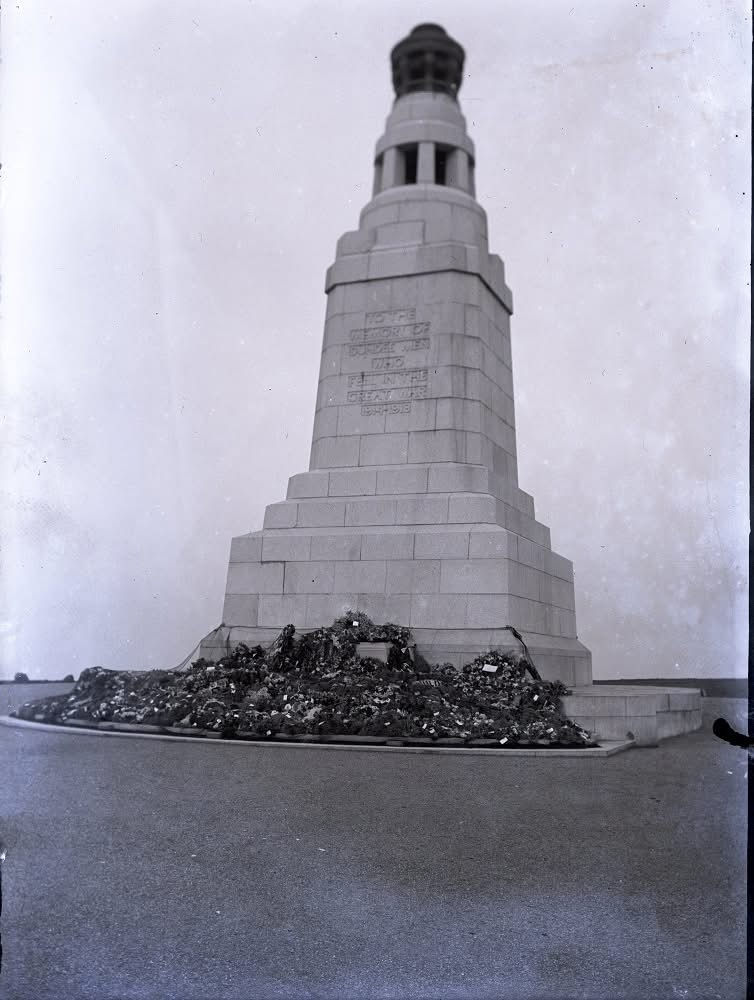How the Dundee Law War Memorial defined Dundee for 100 years
- Andrew Batchelor

- May 11
- 3 min read

This coming week will see Dundee’s highest landmark mark a major milestone: 100 years standing tall above the city.
The Dundee Law War Memorial is more than just a monument. Rising from the summit of the city’s iconic hill, it has become a defining trait of Dundee’s skyline — and a symbol of remembrance, resilience, and pride.

This Friday, the memorial will mark exactly one century since it was first unveiled at the top of the Dundee Law.
The conception
The idea for a war memorial on the Law was first agreed upon on 14 January 1919, with the aim of honouring the 4,000 Dundonians who sacrificed their lives in the Great War between 1914 and 1918.
Before this, the summit of the Law had been reserved for a proposed observatory. That plan was later repurposed, eventually leading to the construction of the Mills Observatory on Balgay Hill, which opened on 28 October 1935.
The Law memorial itself was designed by Thomas Braddock from Wimbledon, London. His design used granite blocks and was crowned with a bronze feature housing a beacon. On the east-facing side of the monument, simple but powerful words were engraved:
“TO THE MEMORY OF DUNDEE MEN WHO FELL IN THE GREAT WAR. 1914 – 1918.”
The unveiling ceremony took place on Saturday 14 May 1925, attended by many dignitaries.

The memorial was formally unveiled by Sir Iain Hamilton, and wreaths were laid at its base to honour the fallen.
Following the Second World War (1939–1945), the west-facing side of the memorial was engraved with the words:
“IN THE WORLD WAR. 1939 – 1945.”
The beacon
At the top of the memorial, the beacon stands as a key symbol of hope and remembrance. It is lit four times each year to mark significant moments of reflection.
On 25 September, the beacon is lit to commemorate the Battle of Loos, one of the darkest days in Dundee’s history. During this battle, the majority of Dundee men from the 4th Battalion, Black Watch went out to fight — and many never returned home, leaving a lasting scar on the city.
The beacon is also illuminated on 24 October to mark United Nations Day, recognising Dundee’s connections to wider global efforts for peace.

On 11 November, Armistice Day is honoured with the beacon’s light, paying tribute to the end of the First World War and remembering all those who served and sacrificed.
Finally, the beacon is lit on Remembrance Sunday, the second Sunday of November, when the nation collectively honours its fallen heroes.
Each lighting of the beacon serves as a powerful reminder of sacrifice, resilience, and the enduring spirit of Dundee across generations.
A new era for Dundee
Although the memorial was built as a solemn tribute to fallen heroes, it also marked the beginning of Dundee’s modern identity.
Set high above the city, it became a visible and emotional landmark — a constant presence in the lives of Dundonians.
Today, many see it not only as a reminder of loss, but also as a symbol of perseverance, pride, and the spirit of community.
It watches over a city that has continued to grow and change, while still honouring those it once lost.

In many ways, Dundee wouldn’t be Dundee without the Law War Memorial. It became — and remains — an integral part of the city’s story.
Marking 100 years
To mark the centenary, a special event will take place at the Dalhousie Building at the University of Dundee.
On Tuesday 14 May 2025, beginning at 6pm, the Abertay Historical Society will host their Annual General Meeting followed by a public talk titled “The Origins of Dundee’s War Memorial.”
The talk will be delivered by Matthew Jarron, exploring the deeper history behind the memorial’s creation, the choices that shaped it, and its lasting impact on the city’s identity. Attendance is free, and tickets are available via Eventbrite.
For a century, the Dundee Law War Memorial has stood as a beacon of remembrance and hope. As it enters its second century, it continues to define the heart and spirit of the city — a place where history, memory, and resilience meet atop the Law










Comments